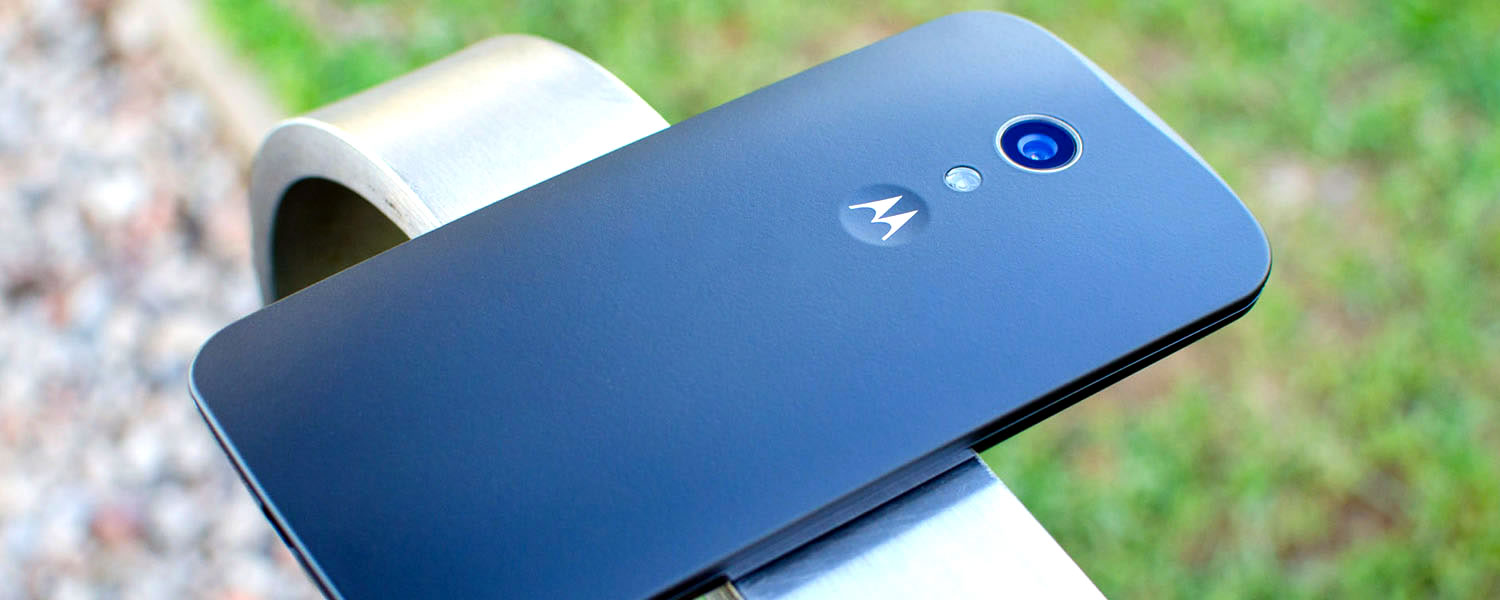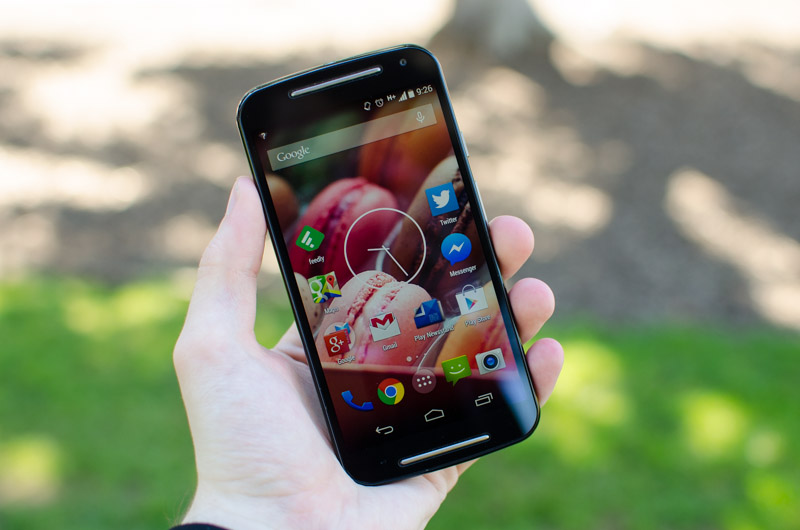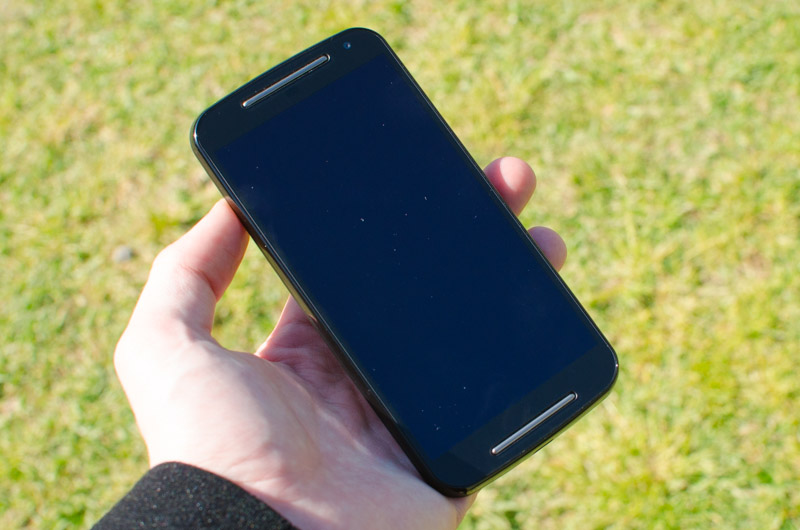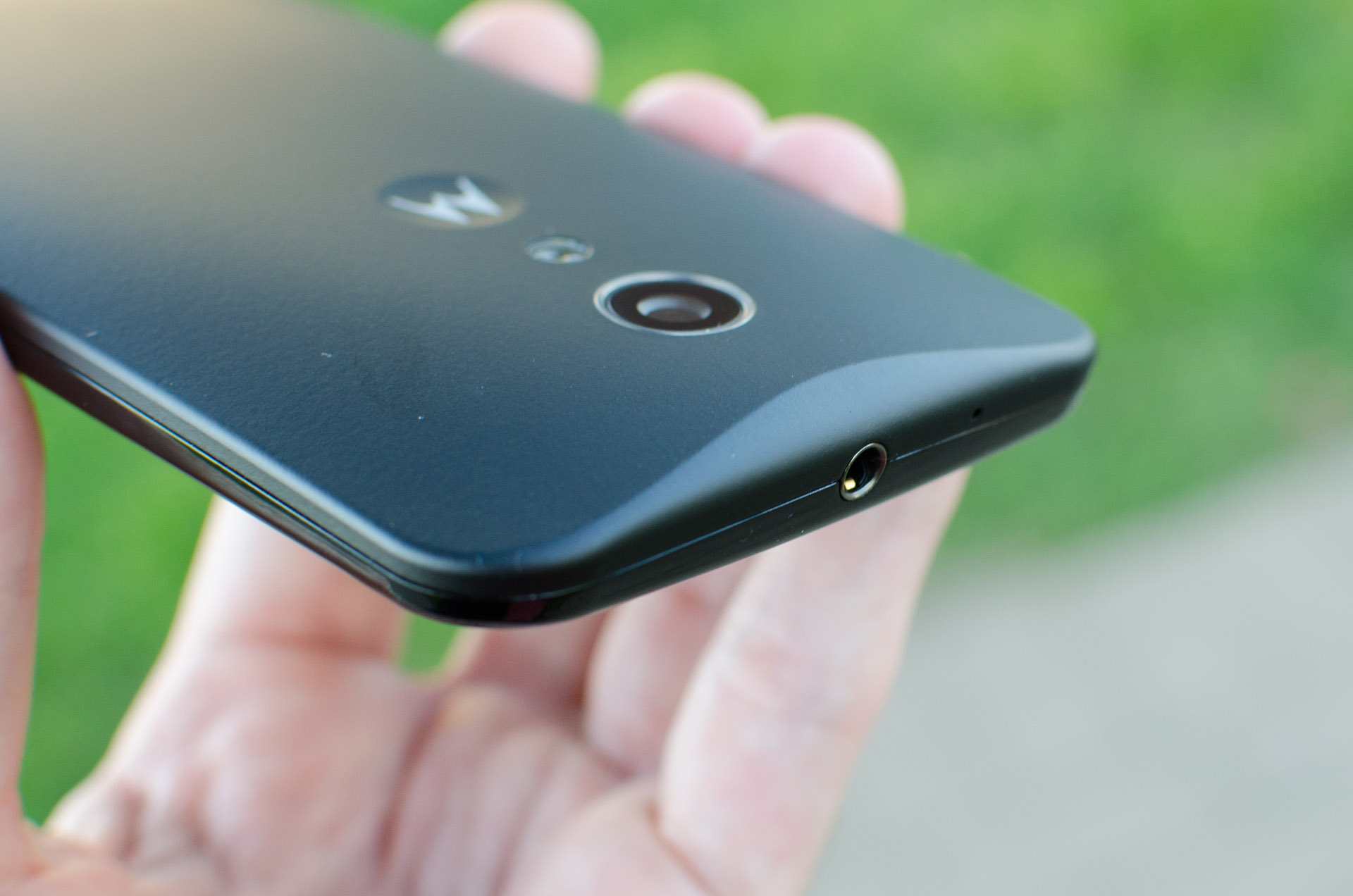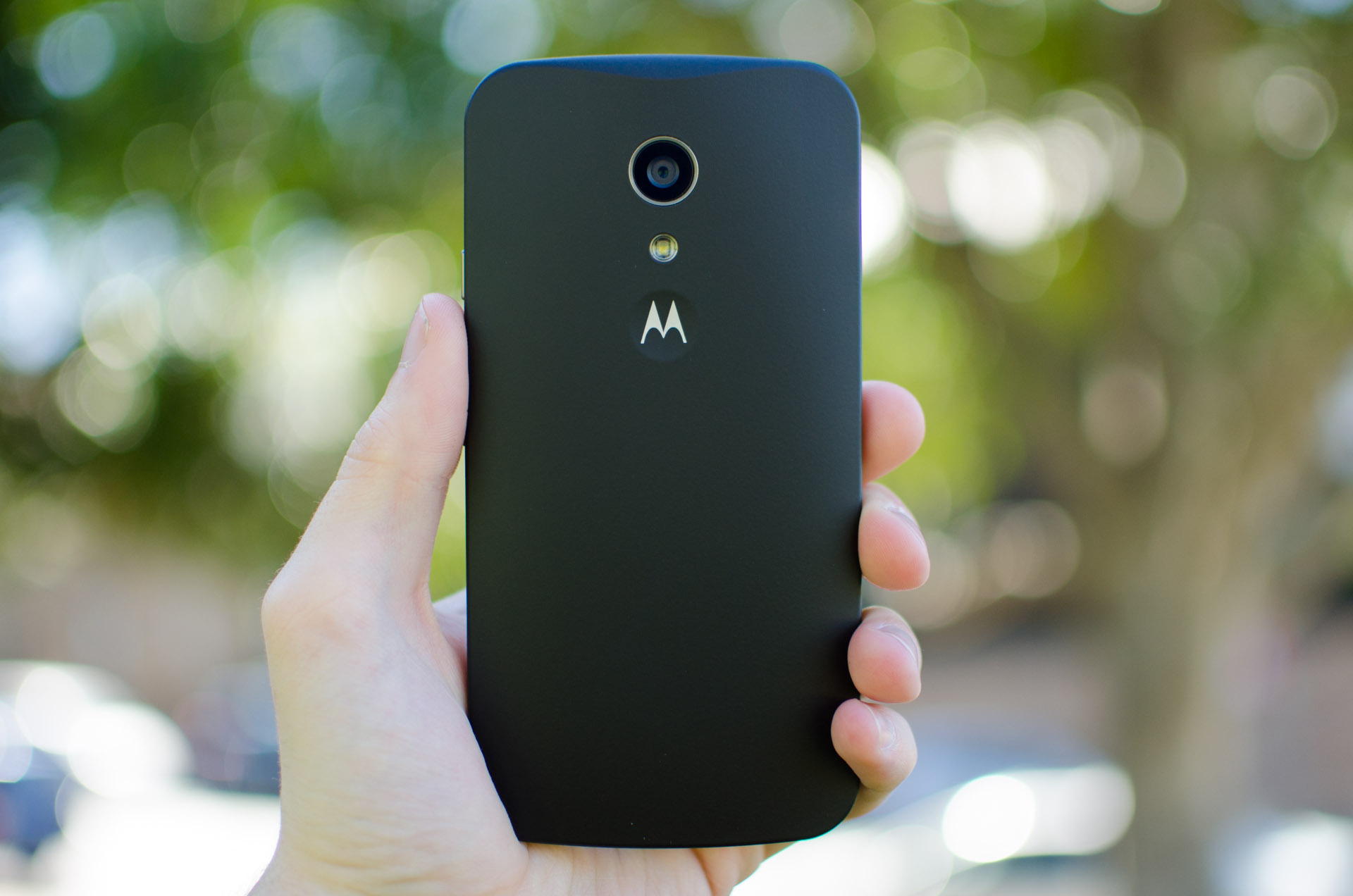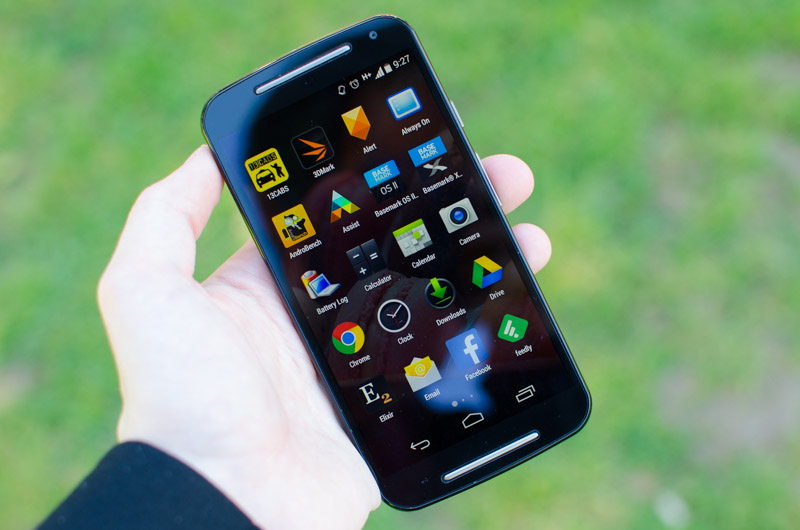It seems like not all that long ago I was reviewing the first-generation Moto G, a fantastic Android smartphone that cost just $179 unlocked and outright. It was Motorola's first major push into the entry-level market under the guidance of Google, and it was a successful one: the Moto G went on to become Motorola's best-selling smartphone of all time.
Ten months out from the launch of the original Moto G, Motorola has unveiled a second-generation model alongside a new Moto X and the Moto 360 smartwatch. Rather than calling this device the 'Moto G2', it's simply known as the Moto G. Naturally this is a tad confusing for people wanting to compare it to the previous model, so most of the time it's being labelled as the second-generation or 2014 Moto G.
Motorola has kept the price of the second-gen Moto G identical, at $179 with 8 GB built-in storage.
With a microSD expansion slot now part of the Moto G's hardware offering, more memory can be added easily and so Motorola has removed the 16 GB model, which previously retailed for $199. As these are off-contract prices, the 2014 Moto G once again presents great value for your money.
Not every part of the Moto G has been upgraded in the second-generation model, but many of the key components have. Display size has increased from 4.5-inches to 5.0-inches with the same 720p resolution, the camera has been bumped up to eight megapixels from just five, and there are now dual front facing speakers.
Other parts, such as the Qualcomm Snapdragon 400 SoC, the 1 GB of RAM, and the 2,070 mAh battery, remain the same. Curiously, there is still no support for LTE in the second-gen Moto G, despite the first gen model eventually getting a 4G-capable brother that retailed for $219. This connectivity limitation is one of the major downsides to Motorola's low cost handset.
The design of the second generation Moto G is very similar to its predecessor, following a similar design language to all of Motorola's devices since the Google takeover. It's basically an elongated, larger version of the 2013 model as to fit in the new five inch display, using very similar materials in a near-identical construction.
Profile-wise the Moto G is around the same size as the Samsung Galaxy S5, although it's slightly smaller in width and more ergonomic to hold. For those of you rocking Motorola's flagship Moto X from last year, you'll find the 2014 Moto G is significantly larger as well, which conforms to the trend of companies releasing new smartphones with larger displays.
Despite its size, the new Moto G is comfortable to hold, thanks to the curvy nature of its design. Rather than simply fitting everything into a flat slab, Motorola has curved the back panel to perfection, allowing the handset to sit in your hands with ease. The corners are rounded as well, assisting with usage, as does the small dimple in the back cover that your fingertip fits nicely in, preventing the phone from sliding around while the display is being operated.
It's clear that Motorola has placed a greater emphasis on functionality over form. The Moto G is 10.9mm at its thickest point, and it looks as much, with very little work going into hiding the fat. The G also packs a fairly uninspiring design that won't win any awards, though it's all for the sake of ergonomics, which are most important in large smartphones such as this one.
The satisfyingly clicky power button can be found just above the volume rocker on the handset's right edge, placed in the perfect position for everyday usage. The top edge has the 3.5mm headphone jack in the dead center, while the bottom features the micro-USB port.
One major change to the Moto G's design is the inclusion of dual front-facing speakers, which gives the handset stereo sound. The output quality isn't as good as say, the HTC One, but they're loud and effective enough to suffice. Having stereo speakers is especially handy for watching videos and playing games, so kudos to Motorola for this improvement.
Most of the Moto G is constructed from plastic, excluding the front panel protecting the display which is glass. The edges are made from a smooth, glossy, cheap plastic, however the back panel - which spends the majority of the time against your hands - is textured nicely. It's not aluminum, but the soft-touch material with a minimalist design is far from the worst I've seen on a budget handset.
Peeling back the rear cover reveals two micro-SIM card slots and the new microSD card slot. Note that not all models of the Moto G are dual-SIM, however the majority of those on sale (especially in emerging markets) will be. Despite the removable back cover, there is no removable battery, with the 2,070 mAh battery being sealed underneath a layer of plastic.
I find it odd that Motorola hasn't squeezed a larger battery into the new Moto G. The company must be relying on other improvements to get similar battery life to last year's 4.5-inch model, considering the display is larger and will consume more power. You can read more about how the battery life of this phone fares later in this review.
On the front panel, along with the front-facing speakers, selfie camera, sensors and small notification LED, is the display. It's a new 5.0-inch LCD unit with a resolution of 1280 x 720, and although Motorola hasn't revealed a huge amount of details about the panel they're using, it's almost certainly using IPS technology. The 720p resolution has stayed the same from the previous-gen Moto G, dropping from 326 PPI to 294.
Despite the reduction in pixel density, it still feels like the Moto G is packing a crisp display. Text, images, videos and games all look great. To see this sort of panel on a budget handset indicates just how fast the technology market moves; two years ago a panel like this wouldn't be out of place on a flagship device like the Samsung Galaxy S III.
High-end panels still have an advantage these days in resolution and color quality, with the Moto G's falling behind slightly when it comes to accuracy and saturation. That said, it's still very good, images look bright and vibrant, helped by a small distance between glass and display that makes it feel like you have a physical connection to the content you're manipulating.
The original Moto G didn't fare too well outdoors, despite the backlight having a high luminance for indoor usage. This issue is still present with the 2014 Moto G, as Motorola seems to have omitted a few polarizing and glare reduction layers that could help the situation. While only a small part of the overall equation, these are the things you miss out on when purchasing an entry-level handset.
Black levels are average from the Moto G's display, leading to acceptable but not fantastic contrast. Tilting the display off-normal reveals a significant shift to grey when dark images are being displayed, but otherwise the viewing angles are quite good from this likely-IPS variant. Color tone appears just about spot on when it comes to white levels, falling somewhere around the ideal 6500K mark.
On-screen navigation buttons are found resting in the Moto G's display area. If you're using an app that doesn't make use of Android's advanced on-screen button features, like the immersive mode, the effective screen real estate you'll get is 4.72 inches worth. This is quite manageable for one-handed use, falling right into the ergonomic sweet spot (with a small amount of practice).
One thing is clear, the Moto G's panel is a step above its immediate competition. In the last few months I've tested the budget Asus Zenfone 5 and Kogan Agora 4G, and the Moto G is clearly better. Considering these two devices have the similar displays on paper - five inches and 720p - this is a great result for Motorola.
